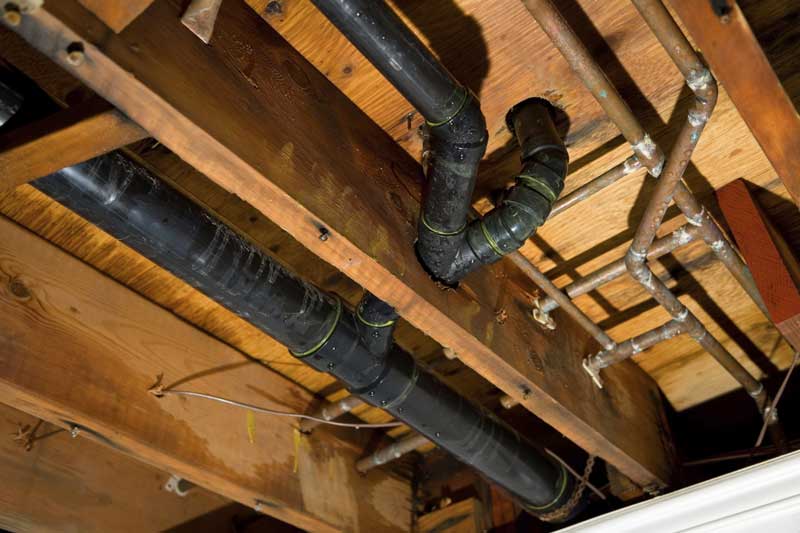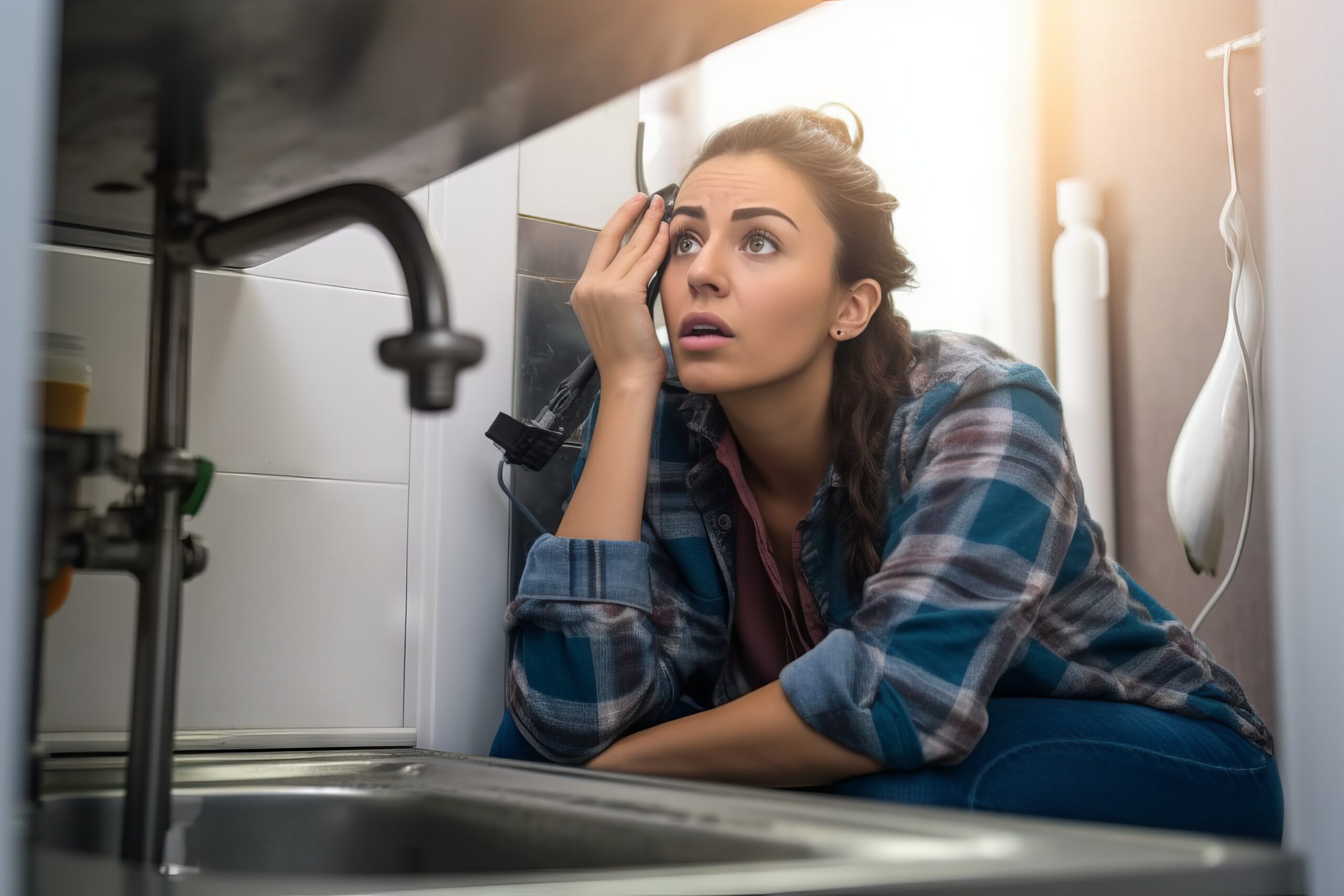Professional Guidance on Managing Plumbing in Older Homes
Professional Guidance on Managing Plumbing in Older Homes
Blog Article
We've unearthed this article about Plumbing Issues in Older Properties and How to Fix Them below on the web and thought it made sense to share it with you on this site.

Older homes commonly feature charm, character, and background, yet they can additionally bring a host of plumbing issues. Whether you're taking care of maturing pipes, low tide pressure, or leakages, understanding exactly how to address these typical problems is crucial to keeping a secure and useful home. In this overview, we'll check out the normal plumbing challenges faced by older homes and supply practical solutions to maintain your pipes in leading shape.
Comprehending Common Pipes Issues
Aging Pipes
Among one of the most common problems in older homes is aging pipes. Depending upon the age in which your home was constructed, the pipelines may be made from materials that have actually deteriorated gradually, such as galvanized steel, cast iron, and even lead. These products can wear away, end up being fragile, or create leaks, bring about water damages and potential carcinogen.
Low Tide Pressure
If you're experiencing low water stress, it could be due to mineral deposits, deterioration inside the pipelines, or old fixtures that are no more working successfully. This can be a significant inconvenience, particularly in areas like showers and sinks.
Dripping Pipelines
Leaks are an additional constant issue in older homes, usually triggered by rusty or worn-out pipelines. Even small leakages can lead to considerable water damages, mold growth, and enhanced water costs if not resolved quickly.
Out-of-date Components
Obsolete plumbing components such as faucets, commodes, and showerheads not just look old yet might likewise be much less reliable, prone to leakages, or incompatible with modern plumbing criteria.
Pipeline Corrosion
Corrosion is an usual issue in older pipelines, particularly those made from galvanized steel or actors iron. Rusty pipes can restrict water circulation, trigger staining, and ultimately lead to leaks or pipeline ruptureds.
Evaluating the Condition of Your Plumbing
Inspecting Noticeable Pipes
Start by examining any kind of noticeable pipelines in your home, such as those in basements, crawl spaces, or under sinks. Try to find indications of deterioration, leaks, or corrosion, which can indicate underlying problems.
Checking for Leaks
Check for leaks by inspecting areas around faucets, commodes, and under sinks. You can also monitor your water meter before and after a period of no water make use of to detect covert leaks.
Water Quality Testing
Older pipelines can affect the top quality of your water. Conduct a water top quality test to check for contaminants such as lead, corrosion, or various other impurities that might be presented by aging pipelines.
Solutions for Typical Plumbing Issues
Replacing Aging Pipelines
If your home has old, weakening pipelines, take into consideration replacing them with modern products like copper or PEX. This can be a considerable investment, but it will stop future concerns and enhance the safety and security and integrity of your plumbing system.
Repairing Low Water Stress
To take care of low water pressure, beginning by cleansing or replacing old components and getting rid of mineral build-up in the pipelines. If the trouble continues, it may be required to replace areas of rusty pipes.
Fixing and Changing Leaking Pipes
For little leakages, you can utilize pipeline clamps or epoxy putty as a short-lived repair. Nonetheless, it's ideal to change dripping pipelines completely to avoid more damage.
Updating Fixtures
Updating old fixtures to modern-day, water-efficient models can enhance your home's pipes performance and lower water consumption. Seek components with the WaterSense tag for the best efficiency.
Handling Pipe Rust
If your pipes are worn away, replacing them with corrosion-resistant products like copper, PVC, or PEX is the most effective option. Routine evaluations and water high quality upkeep can assist protect against even more corrosion.
When to Call a Professional
While some plumbing problems can be taken care of with do it yourself options, there are times when it's finest to hire an expert. If you're dealing with major leakages, extensive deterioration, or are unsure about the condition of your pipes, a certified plumbing technician can provide expert analysis and fixing.
Preventive Maintenance Tips
Regular Evaluations
Consistently examine your plumbing system for indications of damage. Capturing concerns early can prevent expensive repair services down the line.
Water Stress Regulation
Guarantee your water pressure is within the recommended range to avoid worrying your pipelines and fixtures. A plumbing can mount a pressure regulatory authority if required.
Water Quality Maintenance
Mount water filters or softeners if your water quality is poor. This can protect your pipes and components from damages brought on by tough water or impurities.
Aggressive Pipeline Substitute
If your home has very old pipes, consider proactive replacement prior to significant problems develop. This can conserve you from emergency repair services and water damage.
Verdict
Dealing with plumbing issues in older homes requires a combination of watchfulness, precautionary upkeep, and prompt upgrades. By recognizing the typical challenges and understanding when to look for expert assistance, you can ensure your pipes system stays practical and trustworthy for many years to come.
Common Plumbing Problems in Older Homes
Older homes have a ton of character from the antique brass faucets, clawfoot tubs, and colorful tile to the Dutch doors, transom windows, and archways, there s a lot to love. Unfortunately, that character often includes old plumbing that s past its prime and isn t fit to support modern appliances.
If you own an older home and are suspicious about strange noises (ghosts?), smells, leaks, or frequent clogs in your plumbing, it's possible that your home s old age is to blame.
Learn more about the most common old house plumbing problems, and what can be done to fix them!
What Are the Most Common Plumbing Problems in Old Houses?
Old, corroded piping. Most older pipes are made of material that corrodes and rusts more easily. Even if over the years some of that piping was replaced with better material, the rest may be damaged or repaired with lower-quality material. Though expensive, it may be the best option to re-pipe your plumbing especially if there s rust or lead in your water. Slow drains. This could be the result of many issues, but most likely because of pipe bellies. These are sags in your drainpipes that happen as your home settles and shifts downward over time, putting pressure on your pipes and creating negative slopes. This can restrict water from flowing correctly through them and result in slow drains. Frequent clogging. As you might expect, pipe bellies can also lead to frequent clogging. Another reason for clogging could be due to buildup over time, or blockages from sediment and root growth. Scheduling a drain inspection and drain unclogging service can eliminate this issue. Damaged or failing sewer lines. Old homes are more likely to have foundational shifts and tree root overgrowth. This can put a lot of pressure on and in your sewer lines, leading to damage. Another common reason for failed sewer lines is because of modern appliance upgrades. Newer appliances put more strain on sewer lines, and if your old pipes aren t equipped to handle this, it can result in damage. If you have any wastewater backup, slow drains, or soft spots in your yard, you may need sewer line replacement. Worn or outdated fixtures. Plumbing fixtures old or new aren t built to last forever. Even if your fixtures seem like they re working well, it s best to check the wear on any internal parts. Minor wear and tear over time can lead to more costly leaks and plumbing issues. Our experts can perform a plumbing inspection for any part of your home s plumbing. Improper installations or repairs. Whether your plumbing was installed a hundred years ago, installed incorrectly, repaired incorrectly, or repaired with outdated materials, this can affect the long-term stability of your plumbing. In older homes especially, having your plumbing inspected is vital to preventing damage. What Are Old Plumbing Pipes Made Of?
Galvanized steel. Most often used between the 1930s and the 1980s, this piping material was discovered later in the 1990s to be prone to rust and corrosion, releasing lead into the water, which is dangerous to consume. Copper. Most homes built around the 1960s are likely to have copper piping. Unlike galvanized steel, copper is one of the most durable materials for plumbing pipes. The issue with this material is the risk of lead, which could be present in the piping itself or the solder applied to the joints and fittings. PVC. This material is still used today and was often used in older homes where piping was replaced because it was easy and inexpensive to install. PVC is also very durable, lead-free, resistant to rust and corrosion, and handles high water pressure well. The downside is that hot water can make it warp. How to Fix Plumbing Problems in Old Homes
Have your plumbing inspected. Before you begin or schedule any type of repair, schedule a plumbing inspection. An expert will be able to properly identify all the issues in your plumbing and the best solution to avoid further damage. Get your plumbing repaired or replaced as needed. Depending on the issues found with your plumbing, you may need minor repairs or larger replacements. Make sure these issues are addressed before you tackle any smaller issues. Remove any clogs or buildup. It s likely your old pipes are clogged with debris, mineral buildup, hair, tree roots, and more. Having your drainpipes cleaned will improve overall drainage and help prevent future leaks. Replace old fixtures. Before replacing any fixtures, check with your local plumber first. Not only can new fixtures strain your old plumbing pipes, but installing them incorrectly can lead to costly damage.

Do you like more info about ? Try leaving feedback directly below. We will be pleased to hear your opinions about this blog posting. In hopes that you come back again in the near future. Enjoyed reading our blog? Please quickly share it. Let someone else discover it. We enjoy your readership.
View More Report this page